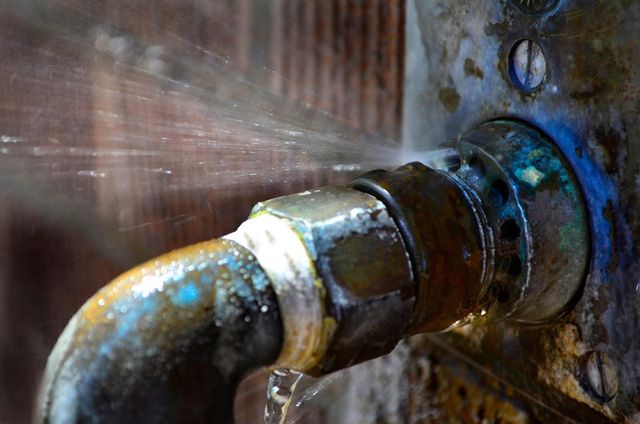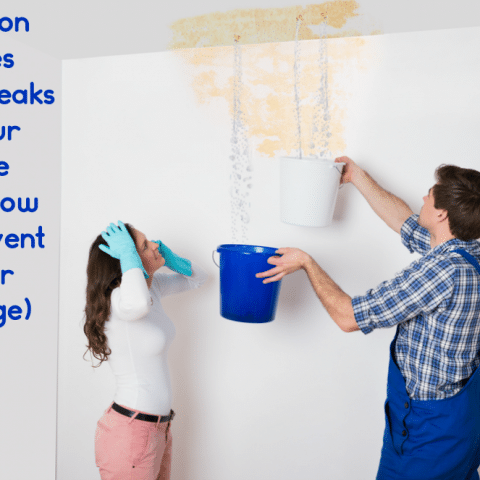How to Find and Fixing Water Leaks-- A Comprehensive Overview
How to Find and Fixing Water Leaks-- A Comprehensive Overview
Blog Article
We've encountered the article involving Detecting hidden plumbing leaks below on the web and think it made sense to write about it with you on my blog.

Early detection of leaking water lines can minimize a potential catastrophe. Some little water leaks may not be noticeable.
1. Examine the Water Meter
Every home has a water meter. Inspecting it is a surefire way that assists you uncover leakages. For beginners, turn off all the water sources. Guarantee nobody will flush, utilize the faucet, shower, run the cleaning maker or dish washer. From there, most likely to the meter and watch if it will change. Because nobody is utilizing it, there must be no activities. If it moves, that suggests a fast-moving leakage. If you spot no modifications, wait an hour or 2 and check back again. This means you might have a slow-moving leakage that might even be underground.
2. Inspect Water Consumption
Assess your water costs and track your water consumption. As the one paying it, you should observe if there are any disparities. If you identify sudden changes, in spite of your intake coinciding, it means that you have leakages in your plumbing system. Keep in mind, your water bill should drop under the same array on a monthly basis. A sudden spike in your costs suggests a fast-moving leak.
On the other hand, a steady boost every month, despite having the same behaviors, shows you have a slow-moving leak that's additionally gradually intensifying. Call a plumber to completely examine your home, especially if you feel a cozy area on your flooring with piping underneath.
3. Do a Food Coloring Test
When it comes to water usage, 30% comes from commodes. If the shade in some way infiltrates your dish throughout that time without flushing, there's a leak in between the container and also dish.
4. Asses Outside Lines
Don't fail to remember to inspect your outdoor water lines as well. Ought to water leak out of the connection, you have a loose rubber gasket. One little leak can lose lots of water and surge your water costs.
5. Examine and Analyze the Circumstance
Property owners must make it a habit to inspect under the sink counters and also inside closets for any bad odor or mold development. These 2 warnings indicate a leakage so timely attention is called for. Doing regular evaluations, also bi-annually, can conserve you from a significant issue.
Examine for stainings as well as compromising as many pipelines as well as devices have a life expectancy. If you presume leaking water lines in your plumbing system, do not wait for it to rise.
Early detection of dripping water lines can minimize a prospective disaster. Some tiny water leakages may not be noticeable. Checking it is a proven way that aids you uncover leaks. One tiny leakage can lose heaps of water and also surge your water bill.
If you presume dripping water lines in your plumbing system, do not wait for it to intensify.
How to Know If Your Home Has a Hidden Leak
Water Meter Reveals Inexplicable Water Usage
If you’d like to test whether or not there’s a leak somewhere in your home, you can do this using your water meter. Here is how to conduct the test:
Don’t use any water in your home for at least 30 minutes; this also means not turning on faucets or water-using appliances.
Go outside, and check your water meter for activity.
If your water meter shows that there was activity, even though no one was using any water, this proves that there is a leak in your home.Visible Mold or Mildew Growth
Leaks behind walls create moist, dark environments that allow mold and mildew to grow and thrive. Eventually, you might see mold growth forming on the wall closest to a hidden leak.
If mold is growing in an area that receives a high amount of moisture, such as a bathroom, it may simply be an indication that better ventilation is needed. However, if you see mold growth on a wall or the ceiling in an area where you would not expect, you probably have a hidden leak.
Musty, Mildew Odor
Sometimes you might not be able to see the mold or mildew that is growing as a result of a leak. However, the smell can give the problem away just as easily. If you catch a whiff of something musty, there’s a good chance that old water is collecting somewhere in your home that you can’t see.
Stained/Warped Walls, Ceilings, or Floors
When your home soaks up water, a variety of red flags can become visible, including ceiling stains, bubbling drywall, warped walls, and sagging floors. While these issues can be caused by excess humidity, they can also be signs that a pipe or plumbing connection has started leaking behind your walls.
Inexplicably High Water Bill
After a while, you get a general sense for what your water bill should be. If you own a pool or sprinkler system, your bill will tend to be higher during summer. However, if you receive a water bill that seems especially high, and you can’t figure out what caused it, then you may have a hidden leak somewhere that’s increasing your bill.
https://www.plumbingjoint.com/blog/2019/july/how-to-know-if-your-home-has-a-hidden-leak/

As a serious person who reads about Hacks to detect leaks, I figured sharing that article was worth the trouble. So long as you liked our page kindly be sure to share it. I value reading our article about Locating water leaks.
Report this page